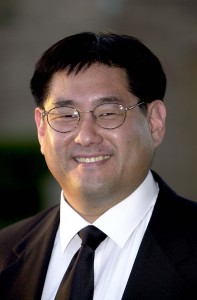
Dr. Relly Nadler: This week we are going to be looking at emotions, deception—what can we tell by looking at someone’s face around deception—and how does that ties into leadership. In a time when we are all studying the candidates for the primaries as our future leaders, what can their faces tell us in addition to their words? What are the key emotions you can tell from reading someone’s face? What are the clues that tell you someone is lying? What does the latest research tell us about emotions across cultures?
These will be the questions that we will focus on during this show. Dr. David Matsumoto is the CEO and Research Director for the Ekman Training Group and Professor of Psychology and Director of the Culture and Emotion Research Laboratory at San Francisco State University. He is a worldwide expert on emotions and facial expressions. Dr. Matsumoto has studied culture, emotion, social interaction, and communication for over 20 years. He has approximately 400 works in these areas. One of his well-known books is Culture and Psychology: People Around the World.
He is an internationally acclaimed author and a psychologist. He received his B.A. from the University of Michigan in 1981, and subsequently earned his M.A. in 1983, and PhD in 1986 in Psychology from University of California, Berkeley. He is the recipient of many rewards and honors in the field of psychology, including being named the G. Stanley Hall Lecturer by the American Psychological Association. He is also the Senior Editor for Cambridge University Press Theories on Culture and Psychology.
He is well-known for his ability as Judo coach and official. He holds a 6-degree black belt in Judo, and a Class A coaching certificate from the US Judo Federation. Welcome Dr. Matsumoto.
Dr. Matsumoto: Thank you. It’s a pleasure to be here.
Dr. Relly Nadler: We want to talk a little bit about some of your background. I know from our conversations before, you have worked with Dr. Paul Ekman. Can you talk about that relationship and your background about how that got started?
Dr. Matsumoto: Sure. Well, Paul Ekman and I have known each other for it must be 27 years now. I was actually one of his graduate students; I started with him in 1981. Although he was at UC San Francisco, and I was a graduate student at UC Berkeley, at that time graduate students at Berkeley were allowed to seek out faculty at other universities to do research. I sought him out before I came here to San Francisco, actually. He invited me over to his laboratory and I went. We struck up a relationship where he taught me many, many things.
Then I subsequently worked in his laboratory as a research assistant from it must be the Fall of 1981 through the time I got my doctoral dissertation done, which was in 1986. Then I became a faculty member myself, first at the Wright Institute, and then at San Francisco State University.
Ever since graduating, we have continued to work together as colleagues and collaborators on research and writing. Over the years we have become very good friends and partners as well. We have had a very long and productive, and great relationship.
Dr. Relly Nadler: You know, for a lot of our listeners, they may not know much about Paul Ekman and about the studies. What was it that initially interested you in his work and then maybe you can talk a little bit about what actually that work is.
Dr. Matsumoto: Well, that’s a great question. You know, I first learned when I was a undergraduate at the University of Michigan and when I was in the program there that I had to do a research project for my degree. I was just interested in myself and why kids, especially young kids and infants, could understand the emotions of their parents and other adults around them even though they couldn’t understand the words.
I had this long interest and I questioned and I kind of happened to like kids and working with kids and whatnot, so when I was asked to do a research project for my degree, my project centered on that question.
I did some research in my 3rd and 4th years as an undergraduate at Michigan and because it was on that topic, I did some research on it and got some degree of expertise in it. So when I went to graduate school, here to Berkeley, my advisor back at Michigan said, well, when you go to Berkeley if you are interested in this emotion stuff, why don’t you look up this guy Ekman, because he is pretty well known in that.
It was gratuitous and lucky as that, that just turned me on to looking up Dr. Ekman and seeing what kind of research he did, and what he was doing.
Then, to tell you the truth, between end of summer, between undergraduate and graduate educations, I happened to be back home, which is in Hawaii, and I wrote Paul Ekman a letter saying, hey, I’m going to be in grad school, and I have done this undergraduate thesis on this topic, and my advisor suggested I meet you, so would you like to meet?
He happened to write me back and these were the days when there is no email, right, we actually typed letters out and put a stamp on them and actually used the mail service. Anyway, he wrote me back and said yah, when you show up call me up, look me up, and come on over. So, I did. It was just as fortuitous as that started my career.
No Ekman, in response to your question, had just completed several years previous to that, this amazing research that demonstrated the universality of certain facial expressions of emotion. He had gained quite a lot of notoriety in the field of psychology because of that. Had then just completed the first round of his creation of what is known as the Facial Action Coding System.
Dr. Relly Nadler: David, can you tell our audience what this research is really about and kind of break it down so we can get a picture of what it is you spend a good part of your career doing?
Dr. Matsumoto: Well, the research started with the question of whether facial expressions of emotions and emotions themselves are universal or not. That question started with Darwin. What happened was is that Darwin of course, has his Theory of Evolution. When he was doing his research and writing on his Theory of Evolution, he actually included a large portion of his work and thinking to the topic of emotions.
Darwin actually thought that emotions and their expressions were universal to all people regardless of race, culture, gender, nationality, age, religion, and whatnot.
Dr. Relly Nadler: So that was really just from him studying in theory?
Dr. Matsumoto: Well, he did have some data. What a lot of people don’t realize is, is that Darwin actually did a number of simple studies on emotion to test some of his ideas of not only about emotion but about evolution in general. It wasn’t entirely theoretical, but mainly theoretical.
Dr. Relly Nadler: For example, what were some of the studies they did, and then we can see how that leads to Ekman’s work.
Dr. Matsumoto: Well, for example, Darwin did one of the first kinds of studies that we call Judgement Studies where he asked people all around the world to tell him whether they have seen certain types of expressions in the culture in which they live. He found some data about embarrassment and crying for example from his colleagues that happened to be living in various cultures of the world.
Dr. Relly Nadler: So meaning they saw some of the same things in embarrassment and crying.
Dr. Matsumoto: Yes, that’s correct. So he got some basic judgements of people’s faces, like that from colleagues and friends that he happened to know around the world. These are fairly simple studies that he did, but clearly it was complimenting his very large theoretical thinking about emotion and evolution.
This is a fascinating discussion. You can listen to the entire recording above!
Relly

